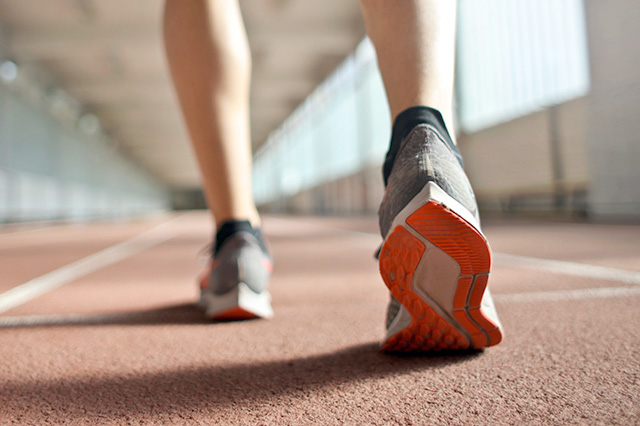Whether you’re a top athlete who runs for a living, run regularly for fitness, just like to jog a few miles around the block every other day, wearing proper running shoes is a must. It’s essential that you get the right shoes for your feet and your needs, and don’t make your decision based on what other people say.
 good running shoes gives you the best start
good running shoes gives you the best startNo two people are the same. Everyone can have completely different preferences and needs when it comes to the right fit and support. You need to know what works best for you, is comfortable, and keeps your feet in the right position when you run. Your shoes play a huge role in your gait, and a pair that fits properly will aid in injury prevention too.
The Anatomy Of A Running Shoe
The first thing to understand about running shoes is that there are a lot of different elements that make up the shoe. They all combine to give you comfort, support, and cushioning. They can also be different based on the type of running you’re doing and the distances you run.
The Upper
This encompasses everything above the sole of the shoe. It’s important to inspect the upper as a whole when buying a pair of shoes. You need to ensure that it’s a similar shape to your foot. You also want to ensure that there are no creases or seams that might chafe or cause blisters on the inside.
The Ankle Collar
As the name suggests, this is the part of the shoe that will sit around your ankle. The most important part to check here is how it sits against your ankle bone and Achilles’ tendon. If the shoe feels like it’s pushing against any point around your ankle when you’re standing or walking, this will become incredibly uncomfortable when running. Check that your heel can’t slip up and down because the collar isn’t shaped properly for your foot.
The Saddle
This is the area that sits around the instep and arch of your foot. It’s connected to the upper, and together, they hold the shoe in place on the foot. This should feel snug and supportive, but not like it’s restricting the natural movement of your foot while you’re running. Your foot will dome and flex as you run, and this part of the shoe needs to allow for that movement without letting your foot slip around inside. If there’s any slippage, you could develop blisters.
read our reviews of different sports and fitness shoes
The Toebox
The front of a running shoe is vitally important because your toes need to be able to move a fair amount while running. Your feet will also get flatter and wider during a longer run, meaning the toebox of the shoe needs to have room for that expansion.
You need both enough width and length in the shoe to give you space for the natural flex and spread of your toes. A good rule to follow is that you can fit your thumb horizontally between the front edge of the shoe and your big toe.
The Heel-Toe Drop
The sole of a running shoe is all about cushioning and support. The structure of the sole is usually a combination of elements—the heel cushioning, midsole thickness, toe spring, flex grooves, and the stabilizing features. The most important element is to feel the weight of the shoe and how much you like the feel of it when you land each stride. Different bodies and running styles prefer different levels of cushioning and stabilization in a shoe, especially if feet are more sensitive or an injury is present.
The heel-toe drop is one of the main features of the sole to look at. This is the difference in height between the heel of the shoe and the front of the shoe. The cushioning is generally thicker at the heel and less at the front due to the nature of how we run—striking the ground with the heel first, then rolling through the foot to push off with the toes. You need to run in the shoe to see if the level of drop off is comfortable for your running style.
Conclusion
As you can see there are a lot of aspects to a good running shoe. The running shoes you choose need to tick all the right boxes. Fit, support, stability, and cushioning all play a role in your performance. When you find the right pair, you’ll feel ready to increase your pace, tackle those tough inclines, and hit your PB.
Related Pages
- Running Shoes - Getting the Right Fit
- Sport Shoe Designs of the Future
- More about fitness shoes
- Buy Nike Shoes in our online store.
- Fitness testing shoes
- About Sports Shoes
- Running for fitness
- Most Common Exercise Injuries to Your Feet and How to Prevent Them


 Current Events
Current Events